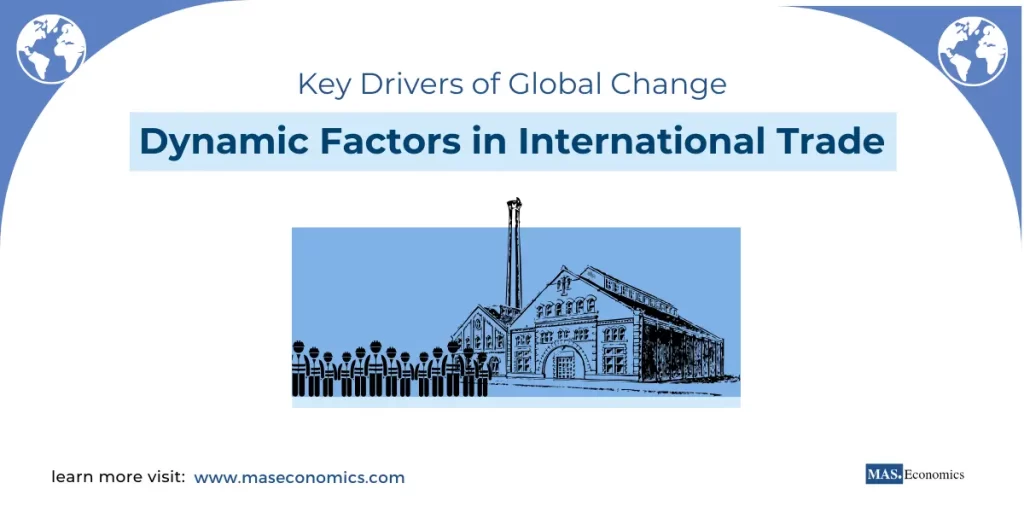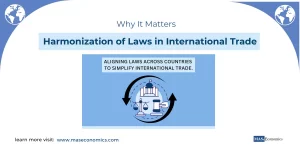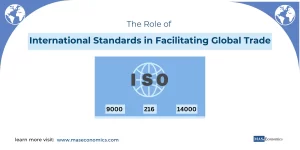International trade is often seen as steady and predictable. Historically, economists like David Ricardo and Adam Smith assumed factors such as technology and tastes were constant when explaining trade benefits. In reality, trade is dynamic—shaped by evolving consumer preferences, technological advancements, and changing factor endowments.
These dynamic factors influence global trade patterns, determining what countries produce, how much they trade, and the benefits they gain. Understanding the impact of shifting consumer tastes, technological progress, and changing factor supplies offers insight into how economies adapt and what drives the evolution of international trade.
Dynamic Factors in International Trade Explained
Dynamic factors are those elements that evolve over time and affect a country’s trade capacity and patterns. These include changes in factor endowments (such as labor, capital, and land), advancements in technology, and shifts in consumer tastes. Let’s break down how each of these plays a critical role in the evolving landscape of international trade.
Growth in Factor Supplies
Balanced and Unbalanced Growth
Factor endowments refer to the resources that a country has available for production, such as labor, capital, and land. As the availability of these resources changes, it also changes the types of goods that the country can produce efficiently, which in turn influences its role in international trade.
For instance, if a country’s labor force grows significantly while the amount of available capital remains constant, the nation now has a relatively larger supply of labor compared to capital. This shift means that the country can produce labor-intensive goods more efficiently than before. As a result, the nation becomes more likely to specialize in producing goods that rely heavily on labor—like textiles—and trade these for other products.
In economic theory, if both labor and capital grow in equal proportions, this is known as balanced growth. Balanced growth allows for uniform expansion in the production of both labor-intensive and capital-intensive goods, providing a relatively stable increase in output across the board. However, if the growth in labor outpaces the growth in capital, this leads to unbalanced growth. In this case, the country will experience a stronger increase in the output of labor-intensive goods compared to capital-intensive goods, shifting its focus on international trade.
Rybczynski Theorem
The Rybczynski theorem formally explains the effect of changes in factor supplies. This theorem states that if one production factor—such as labor—increases while other factors remain unchanged, the output of goods that use that factor intensively will increase, while the output of other goods will decrease.
Consider an example involving the U.K. If the U.K. experiences an increase in its labor supply while the availability of capital stays constant, it will lead to an increase in the production of labor-intensive goods such as textiles. On the other hand, the production of capital-intensive goods—such as machinery—will decline because more resources are being allocated towards the increased labor force. This shift ultimately affects what the country produces, how much it trades, and the types of goods it exports or imports.
Technological Progress and Trade
Technological progress is another crucial dynamic factor that has a profound impact on trade patterns. Technological advancements lead to increased productivity of resources, which can be thought of as an increase in the availability or efficiency of these resources. This change directly influences what a country can produce and how competitive it is in the global market.
There are three primary types of technical progress, each with distinct effects on trade:
Capital-Saving (K-Saving) Technical Progress
Capital-saving technical progress is when technological advancements make labor more productive compared to capital. This type of progress effectively substitutes labor for capital, making it possible to produce more output using less capital. As a result, countries that experience capital-saving progress are likely to increase their production of labor-intensive goods.
For example, if new machinery allows textile workers in the U.K. to produce more fabric with fewer machines, this is capital-saving progress. The country will then find it more efficient to produce and export labor-intensive goods like textiles, especially if the global demand for these goods is high.
Labor-Saving (L-Saving) Technical Progress
Labor-saving technical progress, on the other hand, increases the productivity of capital rather than labor. This type of progress enables countries to produce capital-intensive goods more efficiently. For example, if advancements in automation allow factories in the U.K. to manufacture machinery using fewer workers, then the U.K. will likely focus more on producing and exporting capital-intensive goods like industrial equipment.
Neutral Technical Progress
Neutral technical progress refers to advancements that increase the productivity of both labor and capital equally. This type of progress does not shift the balance between labor and capital-intensive production but rather expands the overall production capacity. Countries experiencing neutral technical progress can produce more of everything—both labor-intensive and capital-intensive goods—leading to a general increase in trade volume and economic welfare.
Technological Progress in Action: Example
Consider a scenario where the U.K. implements capital-saving technological progress that affects both textile and agricultural production. This progress means that labor can now produce more output with fewer machines. As a result, the U.K. can produce larger quantities of textiles and agricultural goods, allowing it to export these goods more competitively. This kind of technological advancement improves the terms of trade for the U.K. because it allows the country to sell goods at competitive prices while achieving greater efficiency.
Changes in Consumer Tastes and Trade
Consumer tastes are perhaps the most dynamic factor influencing international trade. Changes in what people want to consume directly affect what goods are produced and traded globally, and these shifts can have significant impacts on trade volume and terms of trade.
Suppose that consumers in the U.K. start to develop a preference for cloth over wheat. If consumer tastes shift towards exportable goods like cloth, the U.K. can increase its production and exports of cloth, which improves the terms of trade. Essentially, the U.K. is now producing more of what is in high demand globally, allowing it to command better prices. On the other hand, if consumer preferences shift towards goods that need to be imported, the volume of exports may decline, and the terms of trade could worsen.
Such shifts in consumer preferences impact not only trade balances but also the economic welfare of the nation. If the U.K. can capitalize on a global increase in demand for a product it produces efficiently, it stands to gain significantly in terms of income and economic stability.
Dynamic Factors and Development
The role of dynamic factors is particularly significant for developing economies, which often face challenges related to resource availability and technological progress. Many developing countries are heavily dependent on the export of raw materials—such as fuels, minerals, and agricultural products—and they often import manufactured goods.
The dependence on a limited range of exports makes these economies vulnerable to changes in global demand and technological progress in other countries. For instance, if technological progress in developed countries results in substitutes for raw materials—such as synthetic alternatives to natural rubber—then the demand for these raw materials declines, negatively impacting the terms of trade for developing countries.
This highlights the importance of technological advancement and diversification of production for economic resilience. Developing countries that invest in improving their technology and diversifying their production can better adapt to global changes and achieve more stable gains from trade.
Real-World Examples of Dynamic Factors in Trade
The Impact of Technology on China’s Exports
China is an excellent example of how technological progress can reshape a country’s trade profile. Over the past few decades, China has transitioned from producing mostly labor-intensive goods—such as textiles—to becoming a global leader in high-tech exports. This transformation was fueled by significant investments in technology, improvements in productivity, and a growing pool of skilled labor.
By enhancing its technological capabilities, China was able to shift its focus from producing low-cost, labor-intensive products to more sophisticated, high-value goods like consumer electronics and industrial machinery. This transformation not only changed China’s export profile but also significantly improved its terms of trade and overall economic welfare.
Changing Consumer Tastes and the Trade in Coffee
Another real-world example is the global coffee trade. In recent decades, consumer tastes have evolved, with an increasing preference for specialty coffee and ethically sourced products. This change has impacted the trade dynamics of coffee-producing countries like Ethiopia and Colombia.
These countries have adapted by focusing on producing higher-quality coffee beans that meet international preferences. As a result, they have been able to sell their products at a premium price, which improves their terms of trade. The shift towards specialty coffee also highlights how changing consumer preferences can create opportunities for countries to enhance their trade profiles and benefit more from international trade.
Conclusion
Dynamic factors—such as changes in factor endowments, technological progress, and consumer tastes—are key drivers in the evolving landscape of international trade. Unlike early economic models that assumed a static environment, today’s global economy is characterized by constant adaptation and change.
Technological advancements redefine what countries can produce, allowing them to improve their terms of trade and boost national welfare. Meanwhile, shifting consumer preferences shape global trade patterns and determine which countries are best positioned to benefit from these changes. Understanding these dynamic factors is crucial for any nation aiming to navigate the complexities of international trade and enhance its economic welfare.
FAQs:
What are the dynamic factors in international trade?
Dynamic factors are changing elements such as technological advancements, evolving consumer preferences, and shifts in factor endowments (labor, capital, land) that influence global trade patterns and economic benefits over time.
How do changes in factor supplies impact trade?
Increases or shifts in factor supplies, like labor or capital, alter a country’s production capabilities. For example, a rise in labor relative to capital can make a country specialize in labor-intensive goods, influencing its trade profile.
What is the role of technological progress in shaping trade patterns?
Technological advancements improve resource productivity, allowing countries to produce goods more efficiently. Depending on whether progress is labor-saving, capital-saving, or neutral, it shifts the balance of production and trade specialization.
How do consumer preferences influence international trade?
Shifts in consumer tastes drive demand for specific goods, affecting what countries produce and export. For example, a growing global demand for specialty coffee has encouraged producing nations to focus on high-quality coffee exports.
Why are dynamic factors important for developing economies?
Dynamic factors such as global demand shifts or technological advances in other countries can reduce the value of exports from developing economies. Investing in technology and diversifying production helps these countries adapt and stabilize trade gains.
How do real-world examples illustrate dynamic factors in trade?
China’s move from labor-intensive goods to high-tech exports due to technological investments and the global shift towards specialty coffee demonstrate how dynamic factors redefine trade patterns and enhance economic opportunities.
Thanks for reading! Share this with friends and spread the knowledge if you found it helpful.
Happy learning with MASEconomics




